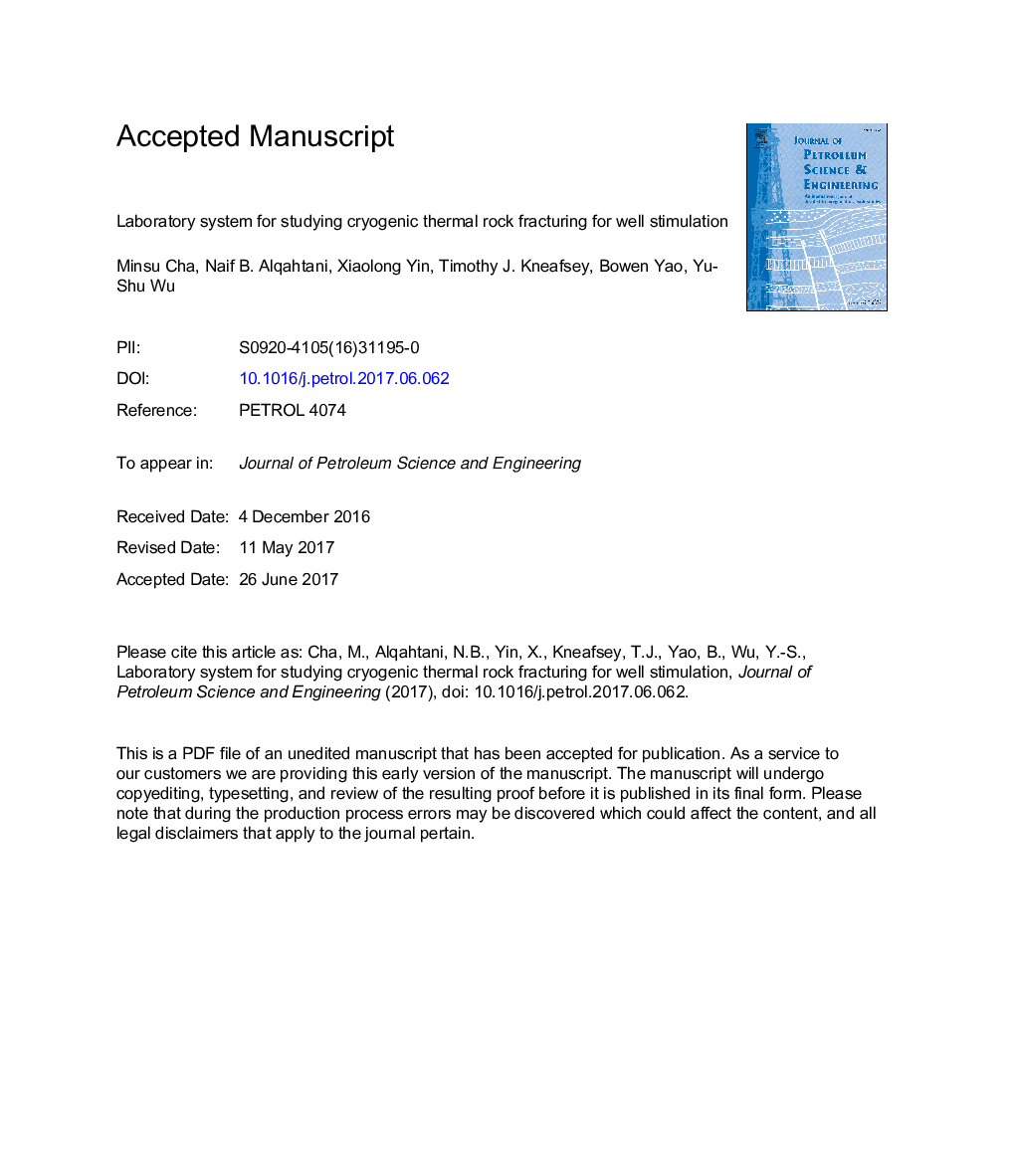| کد مقاله | کد نشریه | سال انتشار | مقاله انگلیسی | نسخه تمام متن |
|---|---|---|---|---|
| 5484151 | 1522785 | 2017 | 24 صفحه PDF | دانلود رایگان |
عنوان انگلیسی مقاله ISI
Laboratory system for studying cryogenic thermal rock fracturing for well stimulation
ترجمه فارسی عنوان
سیستم آزمایشگاهی برای مطالعه شکستن سنگ گرانشی فریزر برای تحریک خوب
دانلود مقاله + سفارش ترجمه
دانلود مقاله ISI انگلیسی
رایگان برای ایرانیان
کلمات کلیدی
شکستن سنگ کریوژنیک، شوک حرارتی، تحریک خوب، توسعه آزمایشگاهی، مخازن گاز شیل و تنگ،
موضوعات مرتبط
مهندسی و علوم پایه
علوم زمین و سیارات
زمین شناسی اقتصادی
چکیده انگلیسی
The concept of cryogenic fracturing is that a sharp thermal gradient developed by applying a cryogenic fluid on a rock surface causes a strong local tensile stress that initiates fractures. Prior field tests suggest that field application with special equipment rated for cryogenic temperatures may deliver potential benefits. The tests did not, however, identify the fracture mechanisms at work in downhole conditions. In this study, we present our laboratory designs and procedures developed for studying cryogenic fracturing mechanisms in a well environment, and examine typical data indicative of the performance of the system. The experimental apparatus and procedures were specifically designed to conduct cryogenic fracturing tests in specimens under confining stress, with integrated cryogen transport, measurements, and fracture characterization. A true-triaxial loading system was built to simulate reservoir stress levels and anisotropic stress application, and was designed to avoid thermal stresses in tests involving cryogen by arranging discrete components in an open chamber. To maximize thermal shock on the wellbore surface, tubing and wellhead are configured so that liquid nitrogen enters the borehole and flow out after contributing to thermal shock. The temperature at boreholes and along flow lines, borehole pressure, and liquid nitrogen consumption are monitored throughout treatments. Acoustic transmission and pressure-decay measurements are used to characterize fractures before and after the experiments. Breakdown tests performed on un-stimulated specimens and stimulated specimens compare breakdown pressures of the two groups and thus evaluate the performance of thermal fracturing. The laboratory design was able to effectively apply cryogenic stimulations to laboratory rock specimens. The characterization methods were able to capture fracture creation and rock property changes due to cryogenic fracturing.
ناشر
Database: Elsevier - ScienceDirect (ساینس دایرکت)
Journal: Journal of Petroleum Science and Engineering - Volume 156, July 2017, Pages 780-789
Journal: Journal of Petroleum Science and Engineering - Volume 156, July 2017, Pages 780-789
نویسندگان
Minsu Cha, Naif B. Alqahtani, Xiaolong Yin, Timothy J. Kneafsey, Bowen Yao, Yu-Shu Wu,
